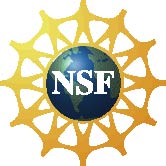Lecithoceridae Overview
Hodges
(1998) defined this family by the autapomorphy of the gnathos consisting of a
sclerotized band fused to the tegumen and that is mesially expanded and ventrally
directed. In addition this family shares the following: 1) frenum present, 2)
forewing with CuP usually absent, 3) hindwing with outer margin excavated posterad
of the apex, 4) larvae with secondary setae, and 5) larva with 2L setae on the
prothorax. In addition, Ocelli are absent, the antennae are often thickened and
long in males, and the maxillary palpi are 4-segmented and folded over the base
of the proboscis (Scoble, 1992). Larvae have dense, branched secondary setae on
verrucae and crochets arranged in a uniordinal mesal penellipse or in a pair of
transverse rows (Scoble, 1992).
The family has been
divided into three subfamilies. Torodorinae is defined by a thorn shaped uncus
that tapers to an acute apex, Lecithocerinae has an uncus with a narrow base and
broad, bilobed apex and a narrow sclerite extending from the base of the tegumen
to the mesial surface of the valva, and Ceuthomadarinae is defined by the absence
of a haustellum, apophyses anteriores that usually are as long as the bursa copulatrix,
and the narrow sclerite that extends from the base of the tegumen to the valva.
Larvae feed on dead
plant tissue and detritus.
The family includes
more than 500 species in 90 genera and are primarily Indoaustralian, although
some species occur in the southern Palearctic and Africa.
References: Clarke
(1955a, 1965), Common (1990), Gozmany (1978), Janse (1949-54, 1958-63), Kanazawa
(1986), Moriuti (1982), Piskunov (1981), Sattler (1973).



